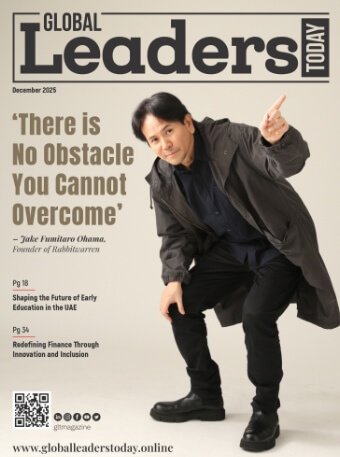Watching episodes of the hit collegiate sitcom A Diff’rent World in high school illuminated possibilities of what student life at an HBCU (Historically Black College or University) could be for me. I imagined myself as the show’s characters: attending lively homecoming festivities like Dwayne Wayne, being on a sorority pledge line like Kim Reese, or discovering cultural artifacts hidden in campus infrastructure like Freddie Brooks. The show’s run ended when I was a sophomore at my beloved alma mater– Talladega College, Alabama’s oldest private HBCU. Suffice it to say, the show’s enduring depictions are authentic to my lived experiences on “the yard,” a term short for schoolyard used to reference an HBCU’s campus.
Decades later– my life then imitated the television series from the perspective of the campus leaders it characterized like hard-nosed math instructor Colonel Bradford Taylor, cantankerous but wise cook Mr. Vernon Gaines and dorm director Lettie Bostic. Like these portrayals on A Diff’rent World, my real-life experiences as an HBCU professor provided me with extraordinary practice in leadership. Unique to faculty, staff, and administration of historically Black colleges and universities, I learned impactful lessons as a leader grounded in the culture of these great institutions.
Achieving more with less is the golden rule.
It is no secret that HBCUs endure chronic challenges regarding access, funding, and facility upgrades. Despite this fact, as a faculty at four different HBCUs, I became aware that cultivating elevated student experiences relies on creativity, going the extra mile and thinking outside the box. During the pandemic, when all schools faced issues managing Covid-19– HBCUs confronted higher stakes. As an academic program head, I knew enrichment was key to student support and retention. Since large campus group meetings were unviable, I gained approval to hold the Fall 2021 orientation at the outside patio of a nearby Italian restaurant. After negotiating discounts on high-end pizzas cut in small portions with water and tea, I subsidized on the cheap, then requiring business attire; it became an elegant event with much needed fellowship for re-connection. When full operations returned to the yard, students requested this event plan be an annual program staple. In other instances, I often made onsite classroom changes for access to presentational equipment while other faculty fundraised to assist some students with praxis exam fees. Ultimately, I learned that making something out of nothing is par for the course among HBCU leaders.
Wearing multiple hats is a given.
As an HBCU student, I first became aware that many faculty and staff held side hustles via other campus roles. Back then, my work-study job with the baseball team was positioned at the men’s dorm since the coach also served as dorm director. Our student activities director doubled as the assistant women’s basketball coach while the provost and registrar taught freshman orientation courses. When I became a faculty on the yard, I gained a better awareness that repurposing staff supports the necessary streamlining of institutional operations at HBCUs. For instance, as the graduate communication degree program director I was also its only full-time professor, advisor to all program students, and also serving as the assessment coordinator. It was literally a one-person show. For a year during that time, I held similar responsibilities for the undergraduate communication program in tandem before that vacancy was filled. I later realized that even though some HBCU faculty and staff hold multiple roles out of institutional need, they grow exponentially as leaders, develop a greater skill set at a faster rate, and leverage themselves for higher jobs in the yard, in academia, or in industry. Wearing multiple hats as HBCU faculty allowed me to diversify my professional experience and truly elevate my leadership capabilities for future opportunities.
Be a mentor or be marginal.
The greatest commodity in the HBCU infrastructure is student mentorship. In the yard, mentors are everywhere. During my school days, a business office clerk frequently waited for me on Fridays when I ran late to get weekend cash from my campus account. I still have her beautiful gift to me from when I pledged to a different sorority than she did. Or the admissions officer who awarded me a larger scholarship than my high school grades warranted; later allowing me to use that office as summer storage space after freshman year. When I became an HBCU leader, these acts of mentorship were embedded in my own approach to students. I once worked past the end of a semester to ensure a student met the deadline for a summer arts internship they eventually won. I maintained a monthly meetup with another student to support their integration into campus life. Essentially, I discovered that mentoring at HBUCs is akin to its overall success– because without it, students are underserved, and the impact needed from leaders can render a major shortfall.
In all, these leadership lessons are the manifesto for student engagement at historically Black colleges and universities. They reflect a conducive campus culture interactive social support, and offer direction in understanding the lasting influence of these institutions. Specifically, in my case, these lessons in leadership from the yard represent my legacy which is a lasting reward!
About the Author
Dr. Michelle M. Walton served as faculty at four HBCUs: Stillman College, Texas Southern University, most recently Alabama A&M University, and currently at Paul Quinn College. She is the author of “Regenerating Gender Communication: Awareness, Understanding, and Engagement” and “The Single Shift: Work/Life Experiences of Never-Married Childfree Professional Black Women”. Dr. Walton appeared as a communication expert on WVUA 23 News, having worked in the most diverse cities in the U.S., including New York City. A native of Kansas City, KS— she is now based in Houston, TX.








